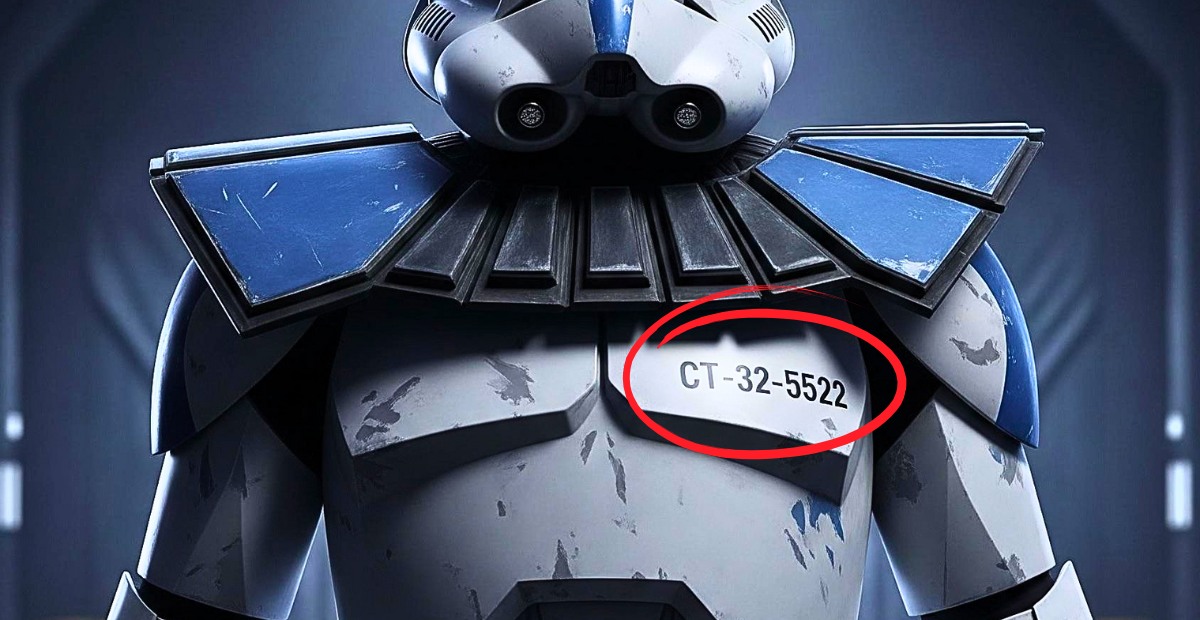You’ve probably seen it a hundred times – rows of clone troopers, marching in perfect formation, identical armor, identical faces. But one thing’s always missing: their CT numbers. For a military force built on discipline and structure, you’d expect every soldier’s serial to be front and center. So why wasn’t it?
There’s more to this than just design choices or animation shortcuts. Once you start digging into the tech, the training, and the culture behind the Grand Army of the Republic, the lack of visible numbers starts to make a lot more sense.
They Didn’t Need Numbers On The Armor – Because Their Helmets Did Everything
A lot of people ask why clone troopers didn’t just slap their CT numbers onto their chest plates. But the answer is actually pretty straightforward once you know how their gear worked. Their helmets weren’t just protection – they were full-on battlefield computers.
Each helmet had a built-in HUD (heads-up display) that showed everything a clone needed to know: teammate positions, names, ranks, health status – you name it. So even if two clones looked exactly the same on the outside, their HUDs told them who they were looking at.
You can actually see how this works in some episodes of The Clone Wars – like when we see Cody’s point of view, and the HUD highlights info on-screen. In The Bad Batch, Hunter’s custom helmet still works the same way, just more advanced. No one had to read physical numbers in a firefight when the tech gave them everything right in their faceplate.
We broke this down in detail over here, if you want to go deeper into what clone helmets could really do.
Clones Hated Being Treated Like Numbers – And They Weren’t Alone
For most clones, the number they were given wasn’t just an ID – it was a reminder that they were created to be tools. So instead of leaning into their serials, a lot of them went out of their way to push back against that idea. They gave themselves names. They painted their armor. They cut their hair differently. Anything to stand out.
This mindset didn’t come out of nowhere. During the early days of the war, an ARC trooper named Alpha-17 helped train future commanders like Rex, Cody, Bly, Gree, and the rest. And Alpha didn’t like being called by a number either. When Anakin Skywalker first worked with him, he just started calling him “Alpha.” That attitude stuck.
As Alpha trained the next batch of ARC troopers, he passed that thinking on. Graduates of the program earned the right to choose their own names, and that tradition spread fast. Rex chose his name after completing ARC training. Cody did too. Even clones who didn’t go through the program started giving themselves nicknames, like Fives, Hardcase, and Dogma.
For a lot of them, it was never about rejecting their role – it was about proving they were more than what they were made to be. Printing “CT-7567” on a chest plate didn’t matter anymore when the guy inside the armor wanted to be known as Rex.
The names meant something. They weren’t just callsigns – they were identity.
The Numbers Were Still There, Just Not Painted On
Even though clones stopped painting ID numbers on their armor, those identifiers were never truly gone. In Legends, clone armor included something called an armor tally — a small plastoid slug embedded in the chest plate or gauntlet. Each tally stored a clone’s identification data, including serial number, rank, and unit.
To read these tallies, officers used tally sensors, which could instantly pull up a trooper’s full profile. This was especially useful during chaotic battlefield conditions when visual markings weren’t reliable. Though considered a bit impersonal — like reading a name tag — it was an efficient system for maintaining order.
Beyond the armor, some clones had encoded chips in their wrist gauntlets, and others even tattooed their CT numbers directly onto their skin. That’s what we saw in The Clone Wars when R2-D2 scanned Gregor — his record was retrieved from a tattoo, confirming his identity.
The Kaminoans, with their unique vision, took things a step further. They embedded invisible pigment patterns into clone armor that were only visible under their light spectrum. So even if all suits looked identical to humans, Kaminoans could instantly distinguish one clone from another.
So while numbers weren’t painted on the surface anymore, they were still baked into the system — in ways both high-tech and biological.
Last Words
Once you look at the tech, the culture, and the systems behind the armor, the reason becomes obvious. Clone troopers didn’t need visible CT numbers. Their helmets gave them all the info they needed. Their training gave them names that mattered more than serials. And their armor was already set up for secure, fast ID scanning in the field.
They weren’t just numbers. And that was the whole point.

